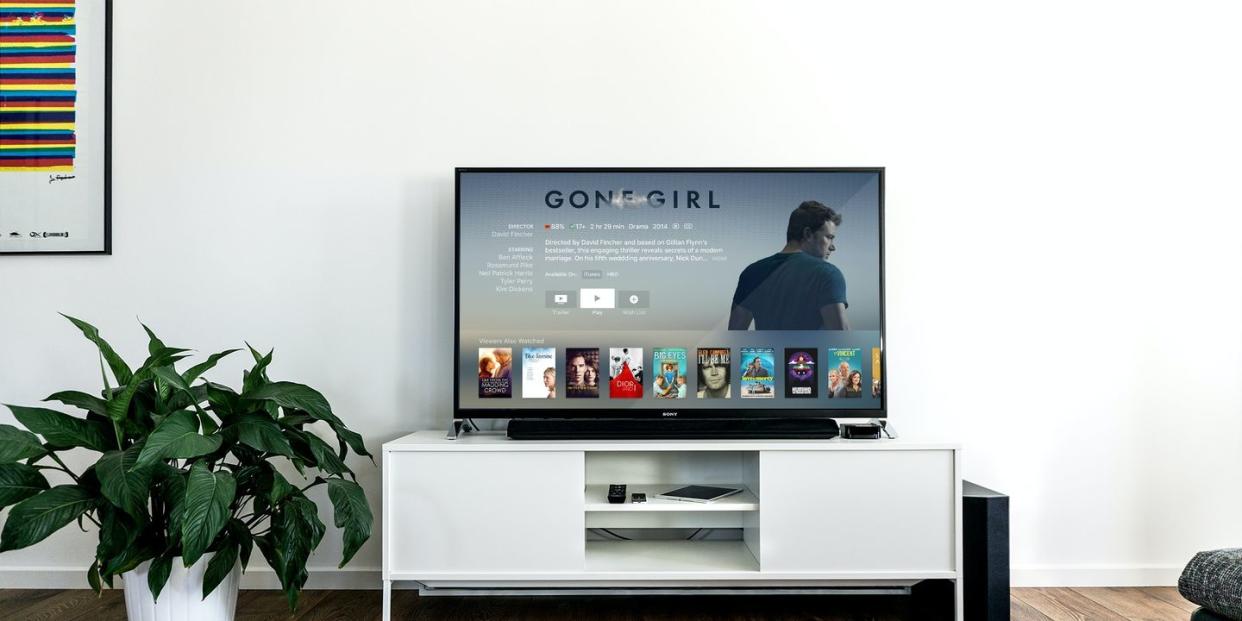What is the difference between LED, QLED and OLED?

All TV lovers know the joy of visiting the John Lewis TV department and gawking at the gallery of gorgeous 4K screens – usually playing a brightly-coloured nature documentary that seems tailor-made to catch your attention just long enough to distract from the price tag.
That’s the true power of a quality display. The truth is that the type of panel tech inside the TV dramatically alters your viewing experience – whether that’s terrestrial channels or watching hours of Netflix on one of the best streaming sticks. Much like our favourite projectors, a quality TV screen has the ability to turn your next viewing of John Wick 4 or Indiana Jones: Dial of Destiny into a cinema-like spectacle at home.
There are three types of TV panel that you need to know about if you’re buying a new model: LED, QLED and OLED.
These are not acronyms to ignore. Each one will give you very different colours, contrast and brightness – with the big variation being how each lights up the screen. Here, we’ll explain the differences between each type and recommend some of our top TVs in each category.
What is LED?
These models use a physical backlight of LEDs (light-emitting diodes) to power an LCD (liquid crystal display), and are the most commonly used panel for smart TVs. These little lights can be placed directly behind the screen (full array) or along the edges (edge-lit) – and are known for delivering excellent brightness levels, although they are thicker in size than many rivals. Still, these are fantastic all-rounders due to the value-for-money, but can’t compete with the colours of a QLED or the pure black tones, wide viewing angles or contrast levels of an OLED.
These sets with a crisp 4K resolution can easily be found for under £500 in 2023 from a variety of reliable brands, including Amazon, Samsung, LG and Hisense. This is the best way of enjoying a larger screen size at an affordable price, and perfect for most family living rooms.
LED TVs that we recommend:
What is QLED?
The Q in QLED stands for quantum. How very Bond. These sets are generally a step-up in colour quality compared to standard LED TVs – placing a “quantum dot” layer between the backlight and the screen to filter the light in a way that produces more vibrant hues from the pixels in the display. Think of these like an upgraded version of a standard LED model – and it’s a fantastic way of enjoying enhanced colours without paying OLED-level prices.
QLED models in 4K resolution are sold by many TV brands – including Samsung, Hisense and LG – and you can find them for under £500 in 2023, but the larger display sizes are more expensive than LED models. We love them for movies, gaming and watching sports – and they are a great option if you want to fully experience animation like Elemental on Disney+.
QLED TVs that we recommend:
What is OLED?
For the best picture quality around, buy a TV with an OLED (organic light-emitting diode) screen. Instead of needing a physical backlighting panel to light up the pixels on the screen like LED or QLEDs, these sets use a fancy type of organic material that comes to life when electricity flows through it. With these sets, the brightness of each individual pixel can be adjusted or switched off completely – and as a result you get pure black tones and unrivalled contrast. As there’s no physical lighting panel inside, these sets are incredibly thin, too.
You can expect to pay much closer to £1,000 for an OLED model from LG, Samsung or Sony. If you want the latest screen technology – there’s now QD-OLED models which adds quantum dot technology for even better brightness – you can expect to pay triple that amount. But if you have the budget and want the best movie-watching experience (especially if you’re investing in a home theatre style setup with a big screen) then this is the screen type for you.
OLED TVs that we recommend:
LED vs QLED vs OLED: Which is best for you?
There’s no definitive answer – each of the TV screen types suit different audiences. LEDs are the most affordable option out of the three and are ideal if you’re buying a smaller set for casual viewing. QLEDs have the edge for colours, so we recommend you get these if you’ll be watching lots of movies or gaming. OLEDs are easily the most expensive models on the market in 2023 – but deliver unrivalled picture quality and black tones, and the lack of a physical backlight means they are incredibly thin, so they are also the best option for mounting it to your wall.
You Might Also Like

